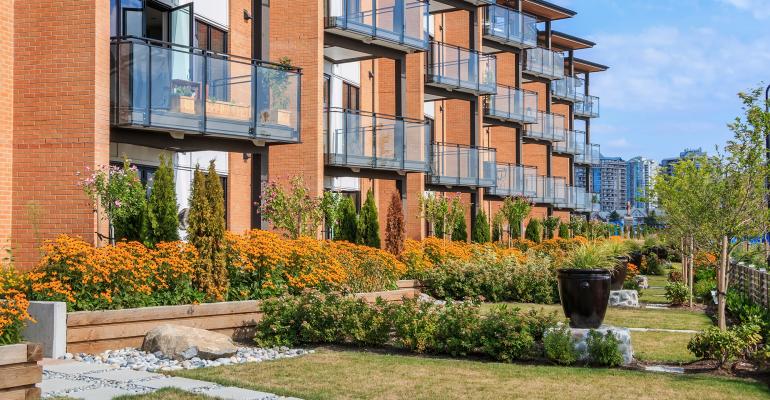Long-term success in portfolio building is a function of agility. We’re seeing where the market is headed and anticipating where we’ll see the greatest demand and most manageable risk.
As the commercial real estate market shifts away from retail, it’s imperative to pivot toward asset classes that will endure and thrive in the post-COVID-19 marketplace. Moreover, it’s essential to look through the curve and lean toward where there are opportunities to create the most value.
While many investors wait on the sidelines, now is the time to be aggressive in buying vintage multifamily. There’s going to be a significant shift towards these garden-style communities as they offer more opportunities for social distancing with open space, lower density, and outdoor access, as well as greater air circulation compared to high-rises with closed hallways and elevators.
What is a ‘garden-style’ apartment asset and why are they undervalued?
A ‘garden-style’ community is one that features exterior access, landscaped grounds, and common outdoor areas for tenants. The structures are generally limited to four stories and feature single-story units with several to a floor. These multifamily properties typically don’t have elevators, and each unit has an entrance off a breezeway or the exterior of the building.
Some of the best investment opportunities are vintage multifamily assets. Many class-B and class-C communities that were built decades ago represent perfect value-add potential. These assets typically have some deferred maintenance, need interior and exterior updates, and lack modern amenities—those which will yield much higher demand, more stable occupancy, and improved NOI.
Additionally, these communities are often close to both professional and manufacturing jobs, schools, retail, and other drivers of value. The rental rates for these apartments are also generally lower than for class-A urban properties, which is crucial given the high unemployment rates and uncertainty in the job markets.
What else about garden-style apartments makes them appealing?
Many young professionals, particularly millennials, are sticking with renting to avoid the risk of foreclosure in the uncertain economic future due to the pandemic.
Younger renters in burgeoning local economies, such as Austin, Texas, are well-diversified and looking for the greatest value in their living spaces. We’ve found success by finding apartment communities near large developments where we can provide a quality living experience and better value to our end users. By improving amenities and bringing interiors up to class-A standards, we’re able to create hip, appealing spaces at a lower price point, and that’s what truly fuels long-term value creation.
Why ‘garden-style’ makes sense post pandemic
Aside from economic considerations, garden-style makes sense from a health perspective. Recovery post-pandemic for landlords of all classes is contingent on meeting users’ needs and expectations with respect to best health practices. As many jobs move away from the central business district, as we see in Austin, with many tech firms developing in the suburbs, residents are finding high-quality, lower-priced living options that are close to work. This helps users avoid the necessity of public transportation—a health concern for many. And, for those that are now working remotely, it’s an opportunity to have a class-A office without the price tag and where they can still get some decent food delivered.
And since we’re all sensibly wary of elevators and indoor common areas, vintage multifamily eliminates these issues and provides an overall more pleasant living experience in a natural setting. Suburban communities in particular offer many class-B and -C properties with excellent natural views backing up to forest and/or creek.
Why vintage multifamily is attractive to landlords and investors
These properties are attractive to investors as many apartment complexes are located in or close to major cities with robust demand factors, including population, industry, and income growth. Class-B and -C apartments also fair well during recessions and have not experienced average occupancy levels below 91 percent in recent decades.
Consequently, these well-located suburban assets are viable for capital infusion from an expenditure standpoint to renovate the units, amenitize them, and bring the interiors up to the standards of class A finish-outs.
Additionally, they pose a much healthier and more affordable investment alternative from a net pricing standpoint. We've seen a tremendous decline in retail, hospitality, live entertainment, sports, and restaurants, and it is going to take time for the market to correct. We’re going to need innovation to reinvent the commercial real estate market.
Creating value
Due to these factors, multifamily is going to be the most valuable asset class over the next 10 years. We see resilience in apartments in general, and specifically in garden-style class-B and -C communities that don't have the occupancy density of high rises and offer more open space and fresh air. Renovating and operating these assets creates enormous value for tenants and owners. Garden-style is the wave of the future.
Ari Rastegar is the founder and CEO of Rastegar Property Company, a vertically integrated real estate company that focuses on value-oriented properties.





